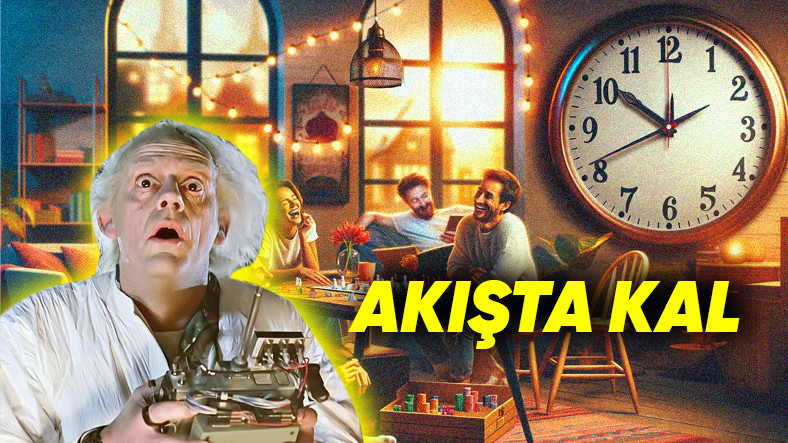Spanish black history is full of absolutely disgusting cases. Our criminal history has nothing to envy that of other countries in terms of violence, darkness and mysteries. So it is not strange that more and more themed TV series are appearing. true crime analyzing and recreating many of these crimes. In the last few months alone, we have seen Netflix hits ‘The Body on Fire’ and ‘The Asunta Case’, with the addition of the latest ‘The Marquis’ about the Galindo case.
However, there is still much to examine in our black chronicle, which is full of characteristically Spanish cases and impossible to export to other countries. These are some of black Spain’s most brutal crimes yet to be adapted into television fiction.
-
Severed Hand (1954)
-
The Tailor’s Murders (1961)
-
Arropiero (1964-1971)
-
Old Man Killer (1987)
-
Puerto Hurraco massacre (1990)
-
Almansa Crime (1990)
-
Alcasser (1992)
-
Role crime (1994)
-
Dynamite Montilla (1982-2022)
Severed Hand (1954)
A true excess who created the Blumhouse horror series and its heroine is Margarita Ruiz de Lihory, Marchioness of Villasante, Baroness of Alcalahí, Duchess of Valdeáguilas, Viscountess of la Camira and lover of Primo de Rivera. In 1954, his son accused him of inflicting various mutilations on the body of the Marquis’ daughter, who had died a few days earlier. When the police inspected the house, they found a container with his right hand cut off, fingers up, soaked in a white liquid. They also found blood-stained cotton, tweezers and other surgical tools. When the body was exhumed, they saw that its tongue and part of its eyes were missing and its hair had been shaved. The marquise and her partner spent some time in a psychiatric sanatorium in Carabanchel, but the cause of the mutilations or whether they were ultimately responsible for the girl’s death was never known.
The Tailor’s Murders (1961)
One of the most inexplicable events in Spanish black history. The 48-year-old man killed his wife and five children in different ways: with a hammer, knife, metal bar and gun. He called the police to report what he had done: They took his address, but he refused to leave until a priest confessed. They managed to talk to him from the balcony of the opposite building, where they saw how the killer displayed the bodies. He killed himself when they confessed over the phone, and it was never known what motivated him to commit this multiple crime.
Arropiero (1964-1971)
A serial killer with necrophilous tendencies, responsible for the most brutal murders in our geography, with 48 crimes behind him. He was a former legionnaire and vagabond (he had learned to execute the traganton, a fatal blow to the madman, in the Legion before deserting, which he employed in some of his murders) and made his living by swindling. . In 1971, he was arrested after the body of a woman with whom he had an affair was found in an open field, and he killed her because she questioned his masculinity. Deemed a “social danger of the highest order”, he was not tried, instead the National Court opted to leave him in psychiatric custody until his death. With the amendment made to the Penal Code, he was granted freedom and again spent his last years as a vagabond until his death in 1998.
Old Man Killer (1987)
It was his hatred of women that marked the greatest serial killer in the history of Spain (amplified because his mother kicked him out of the house, triggering a long career as a rapist). He was sentenced to 27 years in prison, eight of which he served for good behavior, and had all but one of his victims forgive him. After being released from prison, he married a disabled woman who did not suspect his double life, and during this time he killed 16 old women living alone. He was so confident that he left cards with his name and address at the scene. He was sentenced to 440 years in prison, but was killed by two inmates on the grounds that he was a rapist and an informant to the authorities. It apocryphally and freely inspired the 2016 film ‘May God Forgive Us’.
Puerto Hurraco massacre (1990)
Not only is it the starting point for the current assessment of black Spain (it took place in the same year as Germany and only two years before Alcàsser), but also the starting point of a harrowing golden age of television sensationalism around these cases. The Puerto Hurraco crime is the culmination of a long-standing rivalry between two Extremaduran clans, the Izquierdo and the Cabanillas. Two brothers from the first family came out of the house with shotguns and killed nine people, including several Cabanillas girls. The origin of the conflict between the sisters of the murderers dates back 30 years ago, due to some boundaries, and to a love dispute that resulted in stabbing in the 80s. The story was turned into a movie in 2007 by Carlos Saura, ‘The Seventh Day’.
Almansa Crime (1990)
Two years before the events in Alcàsser that shocked Spain, this horrific crime (the worst infanticide in the country’s history) was noted for its horror movie elements: an 11-year-old girl was disemboweled by her mother (a known healer from the region). Albacete, Germany), an aunt, and two neighbors (one of whom had a secret sexual relationship with the healer with esoteric implications) were in the middle of a ritual because they believed the girl was pregnant by the devil. The events occurred following three days of imprisonment and the consumption of psychotropic plants. None of those involved went to prison; One was released and two were admitted to a psychiatric facility.
Alcasser (1992)
The most media crime in Spain’s history was magnified by a television fever of sickness and bloodshed in a year as pivotal in the country’s history as 1992. The mystery surrounding the murders of three teenagers has triggered conspiracy theories on programs such as: late at night It was written by Pepe Navarro and still does his best despite the fact that the case is legally closed and its solution is more or less obvious (and, surprisingly, the reasoning and development are nothing esoteric). Interestingly, although Netflix’s extraordinary documentary ‘The Alcàsser Case’ was highly recommended, no fiction about the incident was ever filmed.
Role crime (1994)
And two years after Alcàsser, another crime shakes Spanish society and makes the press once again infamous for its unscrupulousness and the way it distorts reality in search of effective approaches. This time the scapegoat was role-playing games: two friends, aged 21 and 17, who were absorbed in the game called ‘Races’ created by their eldest, killed a 52-year-old man chosen at random in the Manoteras district of Madrid. His death was fifteen minutes of terrible agony caused by multiple stab wounds, stab wounds and blows. Months later, the killers were revealed because they couldn’t help bragging to their friends.
Dynamite Montilla (1982-2022)
An extraordinary case of a classic serial killer in a country like Spain, where passionate outbursts or temporary outbursts are more common. In the eighties, a man known as Dinamita Montilla was sentenced to 123 years in prison for four crimes that occurred between 1985 and 1987: firearms, stab wounds, burnt corpses… modus operandi and recognized only one of the murders. He left at the age of 23, taking advantage of the Strasbourg decision that overturned the Parot doctrine. In recent years, Montilla had opened a Tik Tok account about the hike, and thanks to clues about his whereabouts, the Civil Guard arrested him again in 2022 for the death of a climber. Montilla is suspected in the disappearance of a woman in 2023.
in Xataka | I have consumed documentaries and ‘true crime’ films my entire life. My conclusion is that the species is extinct.





















